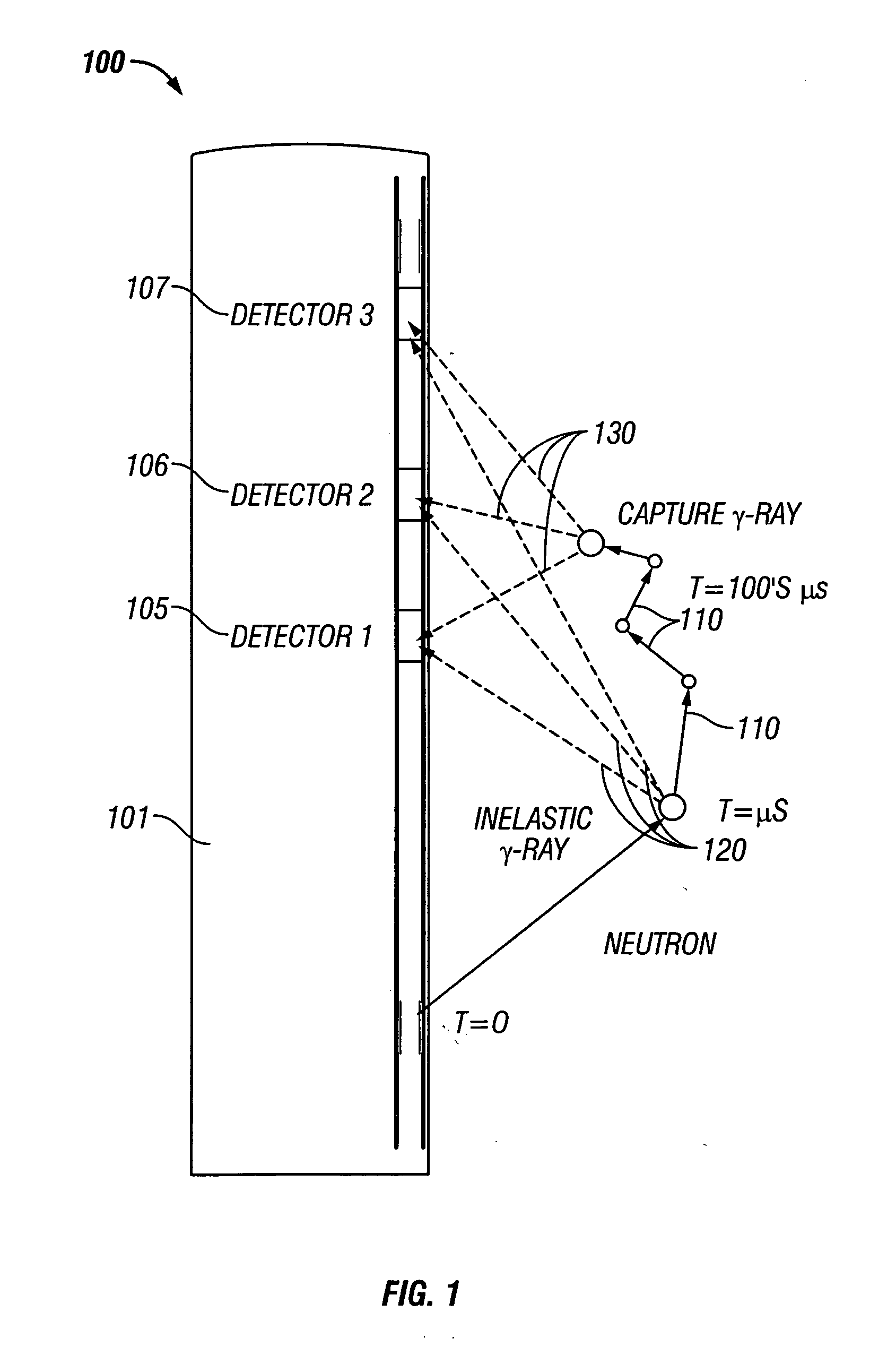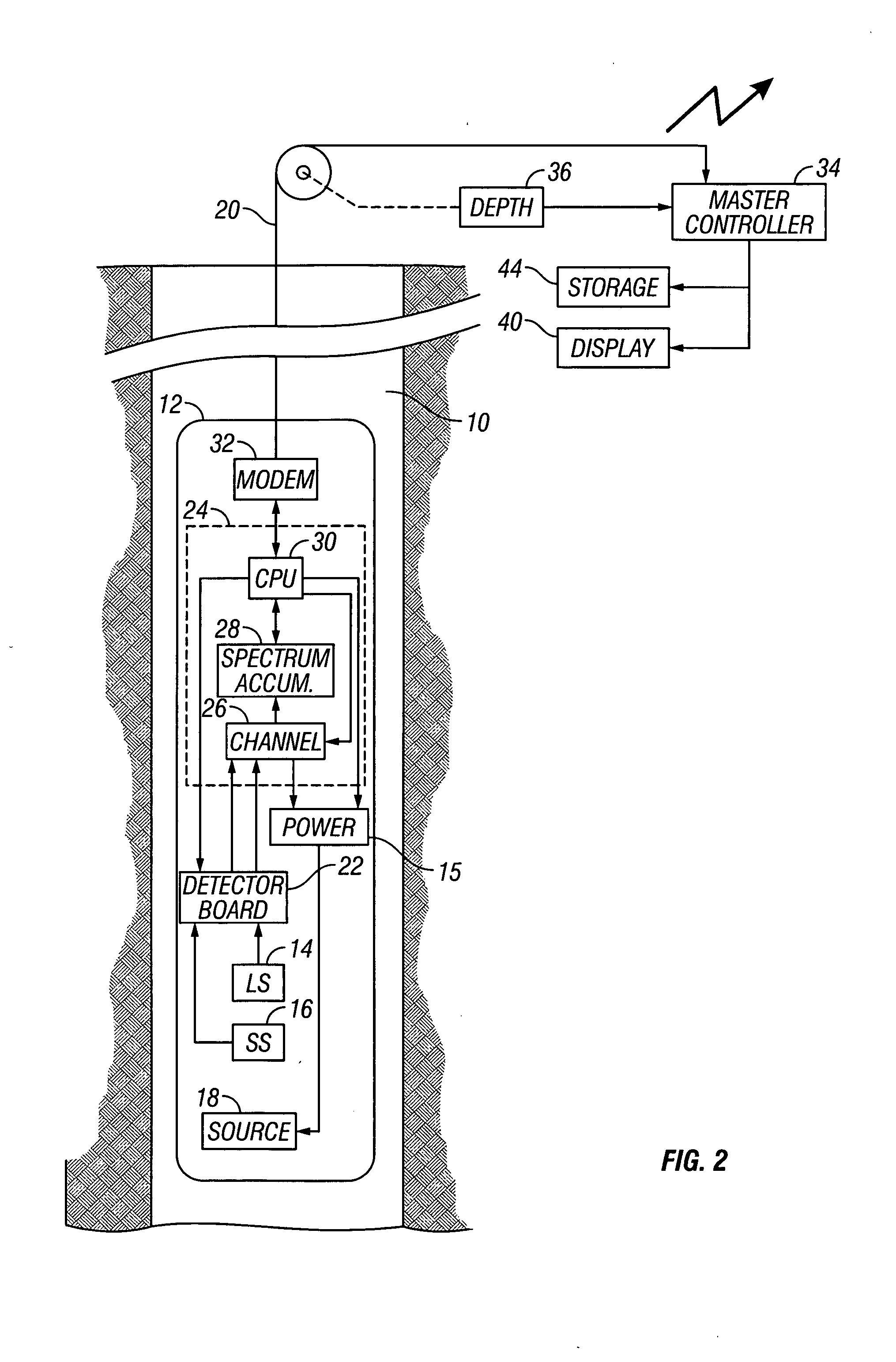Apparatus and method for determining thermal neutron capture cross section of a subsurface formation from a borehole using multiple detectors
- Summary
- Abstract
- Description
- Claims
- Application Information
AI Technical Summary
Benefits of technology
Problems solved by technology
Method used
Image
Examples
Embodiment Construction
FIG. 1 shows an illustration of an apparatus suitable for use with the present invention. The apparatus illustrated is that of the Reservoir Performance Monitor (RPM) of Baker Atlas, Incorporated. A measurement device 100 comprises a neutron source 101 and three axially spaced apart detectors described below. The number of detectors shown in the embodiment of FIG. 1 is only example of the number of detectors employed in an embodiment of the present invention. It is not a limitation on the scope of the present invention. The measurement device of the present invention may comprise two or more detectors. The neutron source 101 may be pulsed at different frequencies and modes for different types of measurements. Detector short-spaced (SS) detector 105 is closest to the source 101 The long-spaced (LS) detector is denoted by 106, and the furthest detector 107 is referred to as the extra-large spaced (XLS) detector. Fast neutrons (approximately 14 MeV) are emitted from the source 101 and ...
PUM
 Login to View More
Login to View More Abstract
Description
Claims
Application Information
 Login to View More
Login to View More - R&D
- Intellectual Property
- Life Sciences
- Materials
- Tech Scout
- Unparalleled Data Quality
- Higher Quality Content
- 60% Fewer Hallucinations
Browse by: Latest US Patents, China's latest patents, Technical Efficacy Thesaurus, Application Domain, Technology Topic, Popular Technical Reports.
© 2025 PatSnap. All rights reserved.Legal|Privacy policy|Modern Slavery Act Transparency Statement|Sitemap|About US| Contact US: help@patsnap.com



